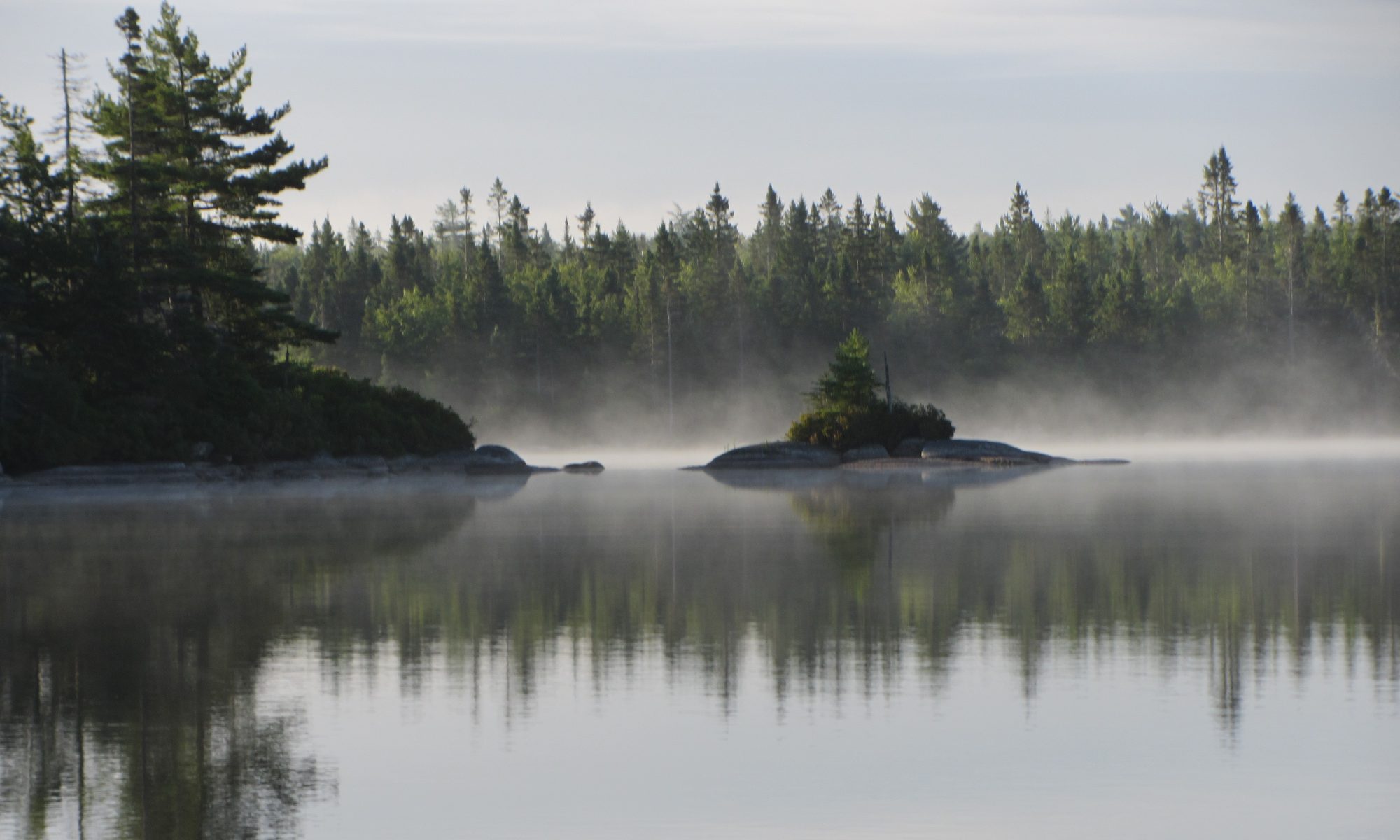 Many of the lakes and streams remain relatively pristine. The Five Bridge Lakes Wilderness Area (FBLWA) encompasses major portions of several major watersheds with many magnificent lakes, rivers, streams and wetlands that remain minimally disturbed. Amongst the species they support are heritage brown water brook trout populations. Some of those closer to the sea support alewife and American eel. These trout are highly sensitive to habitat degradation and fragmentation. Further, maintenance of “brown water”, which is very important in protecting trout from effects of acid rain, is dependent on the continued integrity of the land-water systems.
Many of the lakes and streams remain relatively pristine. The Five Bridge Lakes Wilderness Area (FBLWA) encompasses major portions of several major watersheds with many magnificent lakes, rivers, streams and wetlands that remain minimally disturbed. Amongst the species they support are heritage brown water brook trout populations. Some of those closer to the sea support alewife and American eel. These trout are highly sensitive to habitat degradation and fragmentation. Further, maintenance of “brown water”, which is very important in protecting trout from effects of acid rain, is dependent on the continued integrity of the land-water systems.
The area includes diverse terrestrial habitats & wetlands. The FBLWA is a mosaic of habitats. Broadly, these include extensive, spectacular barrens with pockets of forest and wetlands above the  Old St. Margaret’s Bay Road and, below, largely undisturbed deciduous, mixed and coniferous forest with pockets of barrens, wetlands, and treed bogs. The latter includes significant old growth oak and red spruce stands. An old growth, deciduous multi-aged red oak stand has features that make it unique for Nova Scotia and the type appears to be rare within eastern North America. Old growth red spruce stands contain some of the largest red spruce in Nova Scotia.
Old St. Margaret’s Bay Road and, below, largely undisturbed deciduous, mixed and coniferous forest with pockets of barrens, wetlands, and treed bogs. The latter includes significant old growth oak and red spruce stands. An old growth, deciduous multi-aged red oak stand has features that make it unique for Nova Scotia and the type appears to be rare within eastern North America. Old growth red spruce stands contain some of the largest red spruce in Nova Scotia.
 The FBLWA is home to a group of approx. 30 Mainland Moose, which are ENDANGERED. Moose require or benefit most from a mix of wetlands, open areas and forest in different successional stages to provide food, cover, and relief from heat, and are negatively impacted by roads and trails. The FBLWA provides these habitats, largely free of roads and trails.
The FBLWA is home to a group of approx. 30 Mainland Moose, which are ENDANGERED. Moose require or benefit most from a mix of wetlands, open areas and forest in different successional stages to provide food, cover, and relief from heat, and are negatively impacted by roads and trails. The FBLWA provides these habitats, largely free of roads and trails.
 Many songbirds that are declining in number breed in the FBLWA, e.g., the Canada Warbler.
Many songbirds that are declining in number breed in the FBLWA, e.g., the Canada Warbler.
A limited survey of lichens on Bluff Trail loops 1 & 2 revealed over 100 species.
 The barrens support healthy populations of broom crowberry (Corema conradii) This coastal plain species is threatened outside of Nova Scotia (Magdalene Islands, PEI, several U.S. States), but even within Nova Scotia is declining rapidly due to loss of habitat. There are extensive, very healthy populations of broom crowberry on the barrens and interspersed elsewhere within the FBLWA. The rare mountain sandwort Minuartian groenlandica) is also found on the barrens.
The barrens support healthy populations of broom crowberry (Corema conradii) This coastal plain species is threatened outside of Nova Scotia (Magdalene Islands, PEI, several U.S. States), but even within Nova Scotia is declining rapidly due to loss of habitat. There are extensive, very healthy populations of broom crowberry on the barrens and interspersed elsewhere within the FBLWA. The rare mountain sandwort Minuartian groenlandica) is also found on the barrens.
So…
- Wilderness Protection for the FBLWA will maintain a home for the species cited above and many more..
- Fish and game for traditional fishing and hunting activities are likewise protected. (Such activities are permitted within Protected Areas.)
- The FBLWA fills a large gap in the complex of parks and protected areas on the Chebucto Peninsula (see map) allowing conservation corridors to be constructed and creation of a large and significant conservation area. This will allow more species, possibly many more, to be conserved on the Chebucto Peninsula over the long term than would be the case without the FBLWA.
